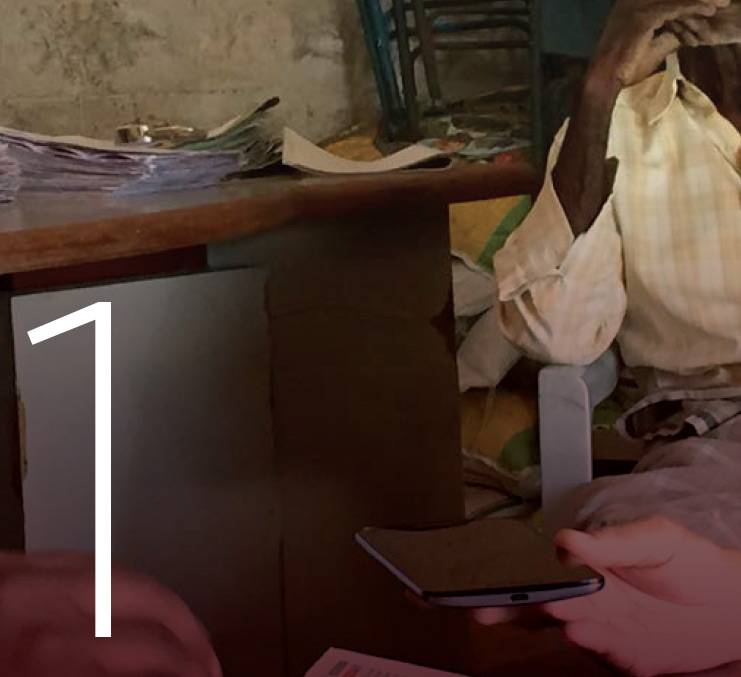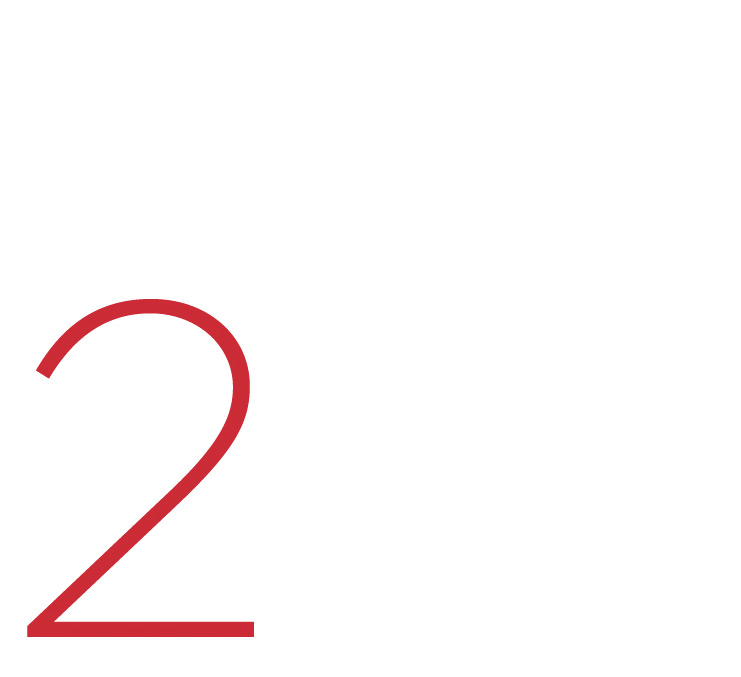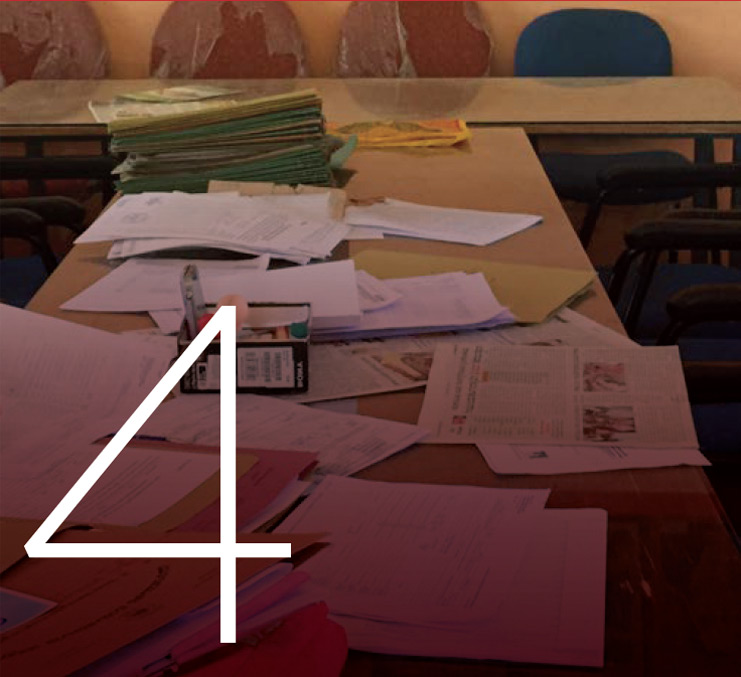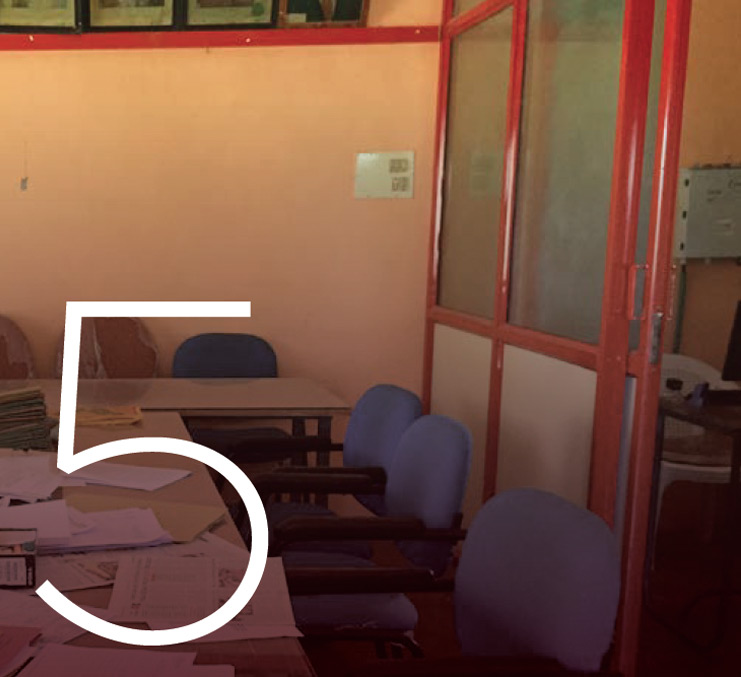This research project is focused on the perceptions and experiences of people who use new identity services and technologies, and we’ll be bringing you those perspectives over the next several months. To complement the perspective of end users, we also spoke to the stakeholders involved in rolling out new identity policies, products, and programs around the world about user focused research and design.
SUMESH, MEMBER OF STAFF AGRO COOPERATIVE OUTLET, GARUDAHALLI 2017
“Individuals are end-users of identification systems, as they require proof of identity to access rights and services.”
“It’s much better if [identity services are] participative, mutually respectful, and provide clear means of recourse. If services are driven by the people for people then the involvement is of a different kind.”
Some of these stakeholders are working for government bodies, others for the private sector; they work with technologies from mobile payments systems to social media to blockchains. Some of their projects are state-led and centralized, while others are private sector-led and decentralized. Yet everyone agrees that user perspectives and stories are missing from our ways of building identity technologies.
These missing stories come in a number of different forms, too. Sometimes they’re about technological literacy, sometimes demands for privacy, or sometimes the need to be mindful of including the vulnerable. In short, people are made up of multiple, diverse identities, and what individuals need from identity technologies is a diverse, flexible set of functions.
SHAAMAPPA RAAMAPPA GRAMPANCHAYAT MEMBERS, GARUDAHALLI KARNATAKA
People are made up of multiple, diverse identities, and what individuals need from identity technologies is a diverse, flexible set of functions.
Here are the six key themes we’ve distilled from our conversations so far:

Adoption rates are no guarantee of effective use.
Nearly all of the stakeholders we spoke to — particularly those from the research and private sector communities — were interested in making sure that people both understood why new identity systems were worth signing up for, and how to use them properly. (Microsoft Research India, for example, told us about how useful this can be to improving service and technology design.) Users must not only be able to read and write the language, but also understand how to operate and interact with the technology. That means there can’t be just one approach to improving user literacy.

Privacy expectations are contextual, but important.
Similarly, the majority of people from every sector saw user-focused research as the way to understand exactly what people want in terms of privacy from their new technologies, particularly in identifying the current baseline of most people’s privacy knowledge and how much they trust technologies that are opaque in function. One representative from a privacy NGO made it clear that “informed consent” is necessary, especially in situations where people aren’t going to be well-informed about the implications of handing over their personal information to others. Those from the private sector worried that poor understanding of privacy could spell problems in the future for other services, as one representative of a financial services provider argued with regard to Aadhaar.

Understanding users beyond citizens and consumers.
Right now, the traditional identity technologies “user” is an individual person, an end consumer, or beneficiary; but, as one academic suggested, institutions such as local governments and service providers could also be understood as “users.” The people in these institutions, “frontline bureaucrats,” have been key players in developing new identity technologies over the years. They’re the ones who are on the frontline, implementing new technologies. Missing out on their experience is a huge error, which is why we’ll be including their stories in our stakeholder interviews.

People rely on intermediaries to use complex systems.
As one interviewee from a technology research institution in Bengaluru described it, intermediaries play an important role in “shaping how users perceive technologies and services, as well as how they use them.” Hiring middlemen to handle bureaucratic paperwork and queueing is common in many countries. Including these intermediaries will give us useful insights into both the roles they play in linking technologies and users, and how best to encourage them to support the adoption of specific new technologies. There are cases, such as middlemen helping users with poor literacy, where more study will be valuable.

Empathizing with vulnerability to mitigate marginalization.
Another argument for a user-centered approach our interviewees cited was its assurance that marginalized communities aren’t forgotten. This means acknowledging and designing for the needs of gender, religion, or caste, for example. Journalists and campaigning NGOs often highlight how the rollout of new technologies can lead to inadvertent reinforcement of systemic discrimination and exclusion, especially when diverse user needs are not considered early in the design phase. Our interviewees from every sector stressed how important it is to anticipate who gets to use new systems, who gets left behind, and why, in order to preempt such exclusion from the outset.

There is no one system to rule them all.
Finally, and above all, many of the stakeholders we spoke to were clear: You can’t just copy and paste identity systems from one place to another and expect them to work, in whole or in part. One stakeholder from an international development organization pointed out an example from another field: how the wholesale adoption of electoral technologies designed for Western, technocratic societies into developing countries causes systemic failures, because things like literacy or electricity are taken for granted in places where their presence cannot be assumed.
This is the essence of the people-centered approach we’re using for this research project. In research, design, and implementation, it can help ensure that policies and programs are designed to meet the needs and interests of the people who actually stand to use and benefit from them.
